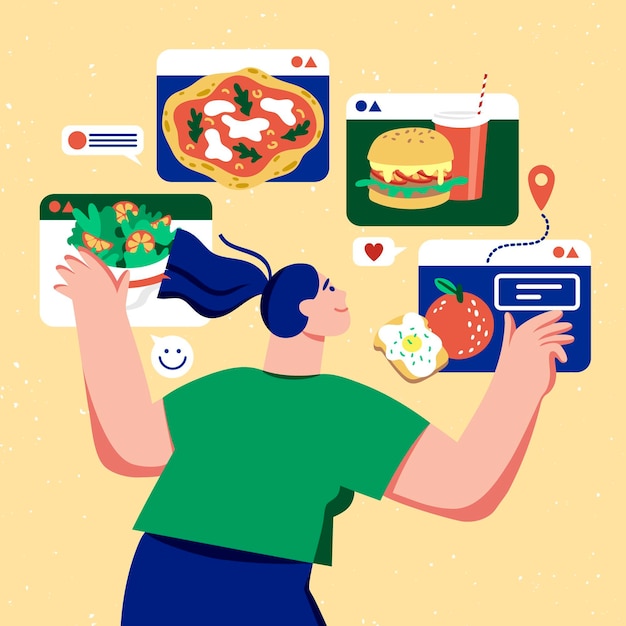
Emotional cravings, often called emotional appetite, refer to the urge to eat even when you’re not physically hungry. Many people use emotional eating as a way to cope with stress, sadness, anger, fear, or failure. While it might provide temporary comfort, this habit often leads to more stress later, especially when it results in weight gain. Emotional eating is one of the main reasons why strict diets and workout plans may fail, as it undermines efforts to lose weight and build a healthier body.
Turning to food for comfort occasionally, like once or twice a week, isn’t necessarily harmful. However, the problem arises when emotional eating becomes your go-to method for dealing with every life challenge, big or small. Many people overeat when they feel lonely, heartbroken, bored, exhausted, or overwhelmed by negative emotions. Unfortunately, this creates a cycle of overeating, guilt, and shame, which can harm both mental and physical health, further compounding life’s difficulties.
Emotional cravings are different from actual physical hunger. While physical hunger is your body signaling that it needs nourishment, emotional cravings are driven by your brain, seeking comfort that food can’t truly provide. Emotional eating doesn’t satisfy hunger; instead, it often leads to overeating unhealthy foods, impairing your ability to make healthier choices.
If emotional cravings are interfering with your well-being, it’s important to recognize the triggers behind them and find healthier ways to cope. Below are some common triggers and effective strategies to reduce emotional eating.
### Common Triggers for Emotional Appetite
1. **Stress**: Life is full of stressors, whether from work, relationships, or daily routines. Many people turn to salty, sugary, or high-fat foods during stressful periods as these offer a temporary boost, thanks to cortisol—the stress hormone—prompting unhealthy cravings.
2. **Uncomfortable emotions**: Feelings like sadness, guilt, anxiety, and anger are common triggers. Food can provide brief relief from these overwhelming emotions, but this habit often turns into a cycle of dependence.
3. **Boredom or loneliness**: Being bored or feeling lonely makes people more likely to eat mindlessly as a way to distract themselves. Food can temporarily fill the emotional void but leaves the deeper issues unresolved.
4. **Social pressure**: Whether at parties, gatherings, or other social events, people often eat more just to fit in or keep up with others. Social pressure can lead to overeating, even when you’re not hungry.
5. **Self-reward**: Celebrating a success with food is another common trigger. While it might feel harmless, indulging in unhealthy comfort foods as rewards can lead to long-lasting unhealthy patterns.
—
### 9 Effective Ways to Curb Emotional Cravings
#### 1. Practice Mindful Eating
Focus entirely on your food while eating—no phones, TV, or distractions. Take the time to chew and savor each bite. This approach not only helps you control portion sizes but also allows you to recognize when you’re truly full. Avoid eating out of habit or to clean your plate; pause and check in with yourself to determine whether you’re actually hungry.
#### 2. Find Alternatives to Emotional Eating
Instead of using food to cope with negative emotions, try other activities to distract yourself. Call a friend, play with a pet, take a walk outside, or watch a lighthearted movie. If you’re feeling stressed, practice deep breathing, yoga, or meditation to calm your mind. These alternatives offer comfort and can reduce the likelihood of emotional eating.
#### 3. Move Your Body or Change Your Posture
Sometimes, the urge to eat is simply from emotional restlessness. Get up and move around—stretch, walk, or even do light exercise. These small activities can shift your focus, helping you manage cravings tied to emotions rather than physical hunger.
#### 4. Keep a Food Diary
Jot down what you eat, when you eat, and how you’re feeling at the time. This can help you identify patterns of emotional eating and pinpoint triggers. Many apps also make it easy to track your food and mood, giving you a clearer picture of your habits.
#### 5. Accept Negative Feelings
Instead of suppressing uncomfortable emotions, learn to face them with self-compassion. Pushing feelings away often makes them stronger, so acknowledging them without judgment can help you feel more in control. Over time, this practice can weaken the grip emotions have on your eating habits.
#### 6. Practice Meditation
Daily meditation, even for just 10 minutes, can help you manage stress, anxiety, and other negative feelings that contribute to emotional cravings. Focusing on your breath and quieting your mind can provide stability and reduce the urge to use food as a coping mechanism.
#### 7. Change Your Perspective on Food
Remember that food is meant to nourish your body, not be a substitute for dealing with emotions. Understanding the difference between emotional and physical hunger can help you regain control over your choices.
#### 8. Take a Break Before Eating
When you feel the urge to eat, pause and ask yourself if it’s hunger or an emotional craving. Giving yourself a moment to reflect can prevent impulsive decisions and help you make healthier choices.
#### 9. Build Long-Term Coping Strategies
Develop healthy routines that don’t revolve around food. Whether it’s journaling, exercising, or engaging in a creative hobby, these habits can provide emotional relief without the need for unhealthy eating.
—
Dealing with emotional cravings takes practice and patience. Over time, you’ll become better at identifying your triggers and finding healthier ways to cope. By applying these strategies, you can break free from emotional eating and enjoy a healthier, more balanced relationship with food.